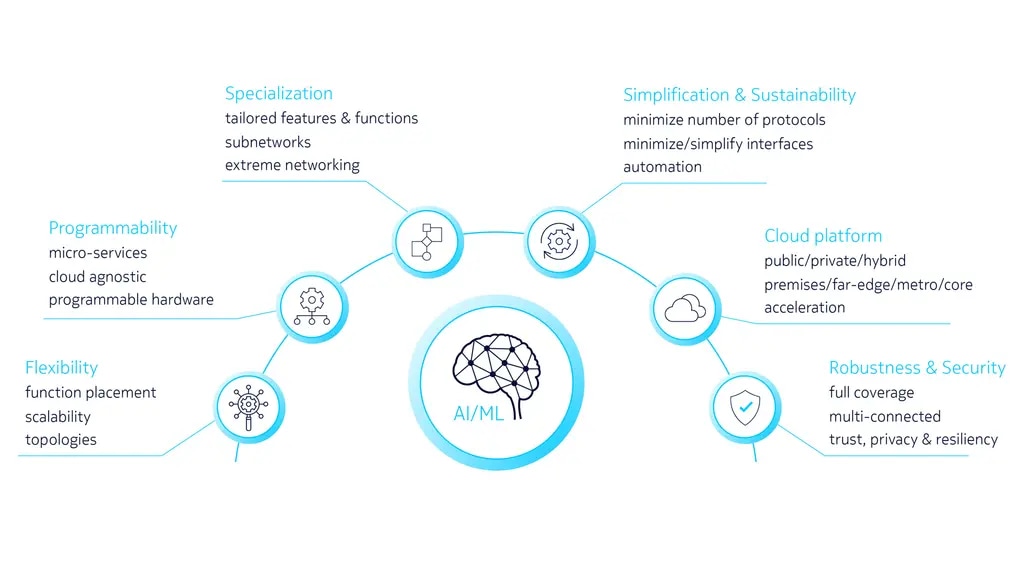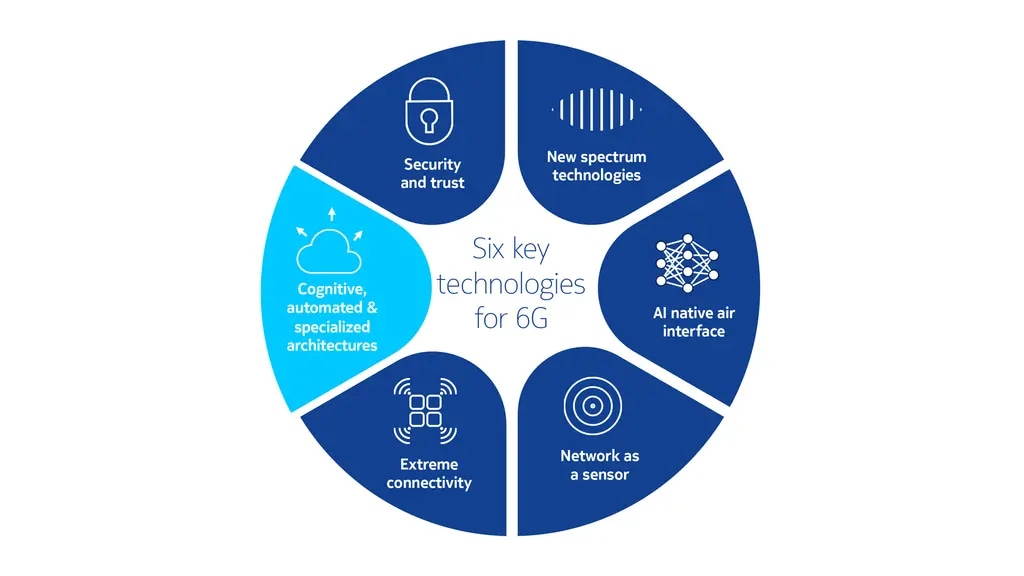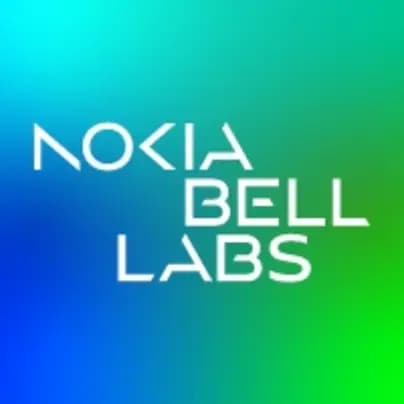A new architecture for a new 6G era

Speed, capacity, latency – for generations, networks and services have been measured by these and other traditional key performance indicators (KPIs). As we start our journey to the 6G era, however, additional KPIs will become important. We will see new performance measures that reflect the broader goals of multiple stakeholders, including operators, webscalers, enterprises, neutral hosts and industry, which in turn reflect the values of society.
Metrics like sustainability, openness, digital inclusion, privacy and trust are becoming additional means by which we measure the capabilities of networks and services. These are the types of new key value indicators (KVIs) that will become just as important – if not more important – than the traditional KPIs of speed, capacity and latency. To build operational networks that maximize these new KVIs, we must have a fresh design approach for the 6G architecture blueprint.
Nokia has published a new white paper titled “Technology Innovations for the 6G system,” which details some of the innovations towards a new 6G system architecture. Let us explore those innovations we expect to have the biggest impact.
New architecture goals
At Nokia we envision a new 6G system architecture with the following distinct design criteria or goals in mind: cloud platform, simplification and sustainability, flexibility, programmability, specialization, robustness and security, and native integration of AI/ML capabilities.

All those design criteria and goals need to be considered when the new 6G system architecture is being developed, while individual actors in the value mesh may have different priorities based on the use cases they are targeting.
All stakeholders will need to focus on sustainability by creating a zero-carbon-footprint networks where every aspect of the network’s operation is designed to minimize or offset CO2 emissions. Other stakeholders might choose to specialize their networks for the metaverse, enabling immersive experiences like extended reality (XR), holographic telepresence and digital twinning. Or an enterprise might build a network focused on connecting the growing multitude of low-power devices and sensors, which requires tailored features and functions. As we fuse the human, digital and physical worlds in the 6G era, a wave of new devices will become part of our connectivity fabric, linking every manner of wearable and personalized sensor – even the fabric in our clothing itself. Such highly interconnected systems will need specific attention to privacy and security along with the data they exchange and generate.
The 6G system architecture
Building a network that supports these kinds of use cases and system goals will require various architectural innovations that span multiple areas. A 6G network can spread across multiple heterogenous and distributed public and private cloud platforms from different stakeholders and will utilize a cloud platform with varying capabilities such as hardware acceleration. Implementations will achieve a new level of programmability to meet the demands of numerous and diverse use cases. The architecture will come with the flexibility and the high degree of specialization necessary for it to be deployed in large-scale wide area networks as well as in extremely local on-premise and personal-area networks. 6G will support that degree of customization to the most granular degree, making each network unique and tailored to its intended deployment needs.
To achieve this new flexibility in network design, we are exploring the system architecture of the 6G network in a fresh manner. In short, we are starting over, abandoning our ingrained prejudices about the current architecture design while giving ourselves the full freedom to innovate a new architecture design.
First, we assume fully cloud-native network functions and services that can be flexibly and dynamically placed anywhere to achieve a wide variety of latency targets and other requirements.
Second, we will introduce a new level of specialization and simplification that will allow mobile networks and services to be built almost like Lego sets with each radio access network (RAN) or core network function comprising a “brick.” Open and service-based interfaces will allow customers to easily assemble these bricks, integrating services and functions from multiple vendors depending on the customer's specific needs and conditions. For instance, we could start with a primary structure consisting of authentication and subscriber identification bricks and then stack secondary bricks like mobility, interworking and roaming on top. We could finish the construction with architectural details and add-ons such as specialized functions and tailored features.
In the process, the distinction between access network and core network will blur, allowing for a more direct communication between RAN and core network functions. Although the concepts of RAN and core network won’t disappear entirely, we can enrich interactions between the two, collocate functions and even merge similar functions.
The 6G architecture will come with advanced domain automation functionalities providing orchestration and automation across multiple network domains, possibly spanning multiple stakeholders, multiple administrative domains and additional resources in the far edge and on premises beyond the traditional mobile network. A significant increase in compute and storage capabilities, for example, is required to store and process the massive amount of data to be collected for services like AI/ML, extended reality (XR) and the metaverse. A dedicated data and information architecture is being proposed to collect and expose the required information from the various data sources across the whole 6G system in an efficient manner. Also, it is crucial to determine the optimal placement and selection of those resources and services from an overall system performance perspective, while respecting service constraints and system KPIs/KVIs.
A new way of deploying networks

Nokia has already started taking the first steps towards enhancing the network capabilities with a range of new features and enhancements in 5G-Advanced, which will be launched in the 2025 timeframe. As outlined by our Chief Strategy and Technology Officer Nishant Batra in a recent blog post, Nokia has begun looking differently at the way it crafts networks. Nokia will design networks as more than a long lists of features, enhancements and technologies, providing service providers with the means to enhance network capabilities in four dimensions: experience, expansion, extension and operational excellence. The new 6G system architecture is the next logical step in that migration path exploiting the full potential of recent innovations and proven concepts.
While a new system architecture will be a key component of networking in the 6G era, it won’t be the only one. Nokia are researching multiple technologies that we believe will define the 6G networks of the future: new spectrum technologies, network sensing, AI/ML-defined air-interface frameworks, security and trust and extreme connectivity. The 6G system architecture will act as the glue and fabric for these technologies, giving us the foundation to make more radical changes to the way we craft networks.
Written by Gerald Kunzmann
